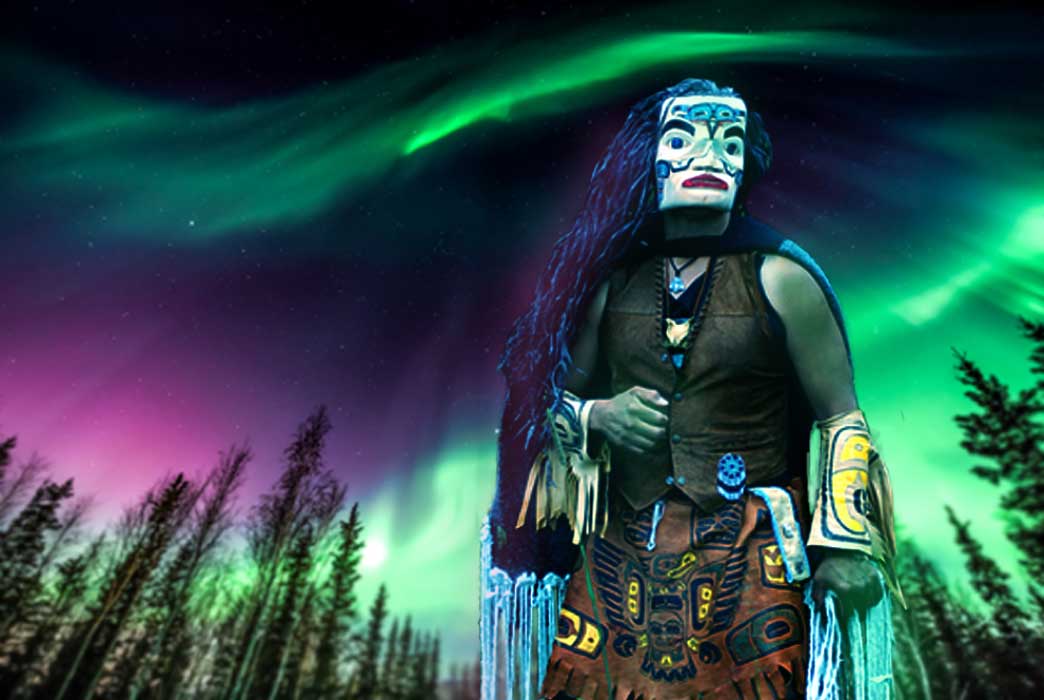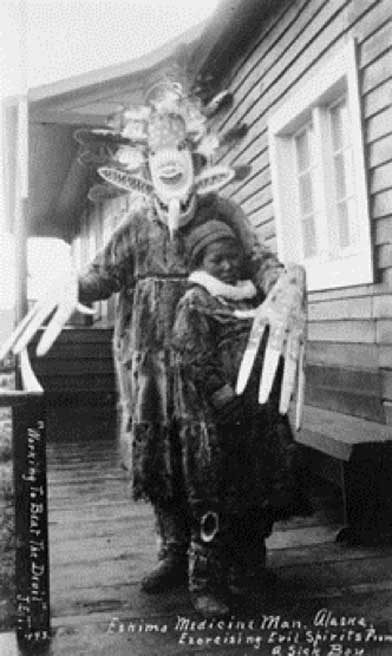
The Supernatural Traditions of the Alaskan Shaman
When the word ‘shaman’ is mentioned, it is common for one to visualize semi-naked cat-skin clad witchdoctors, wheeling around fires in mild southern climates. Less often does one picture holy men wearing seal skins with bear fur boots, fighting frost spirits in northern polar landscapes. The opaque persona of ancient Alaskan shamans have secretive supernatural arts worth investigating, for they are rapidly disappearing into oblivion.

Yup'ik medicine man exorcising evil spirits from a sick boy. Nushagak, Alaska, (1890s) (Public Domain)
In ancient Alaska people’s world views were stitched together with beliefs, myths, rituals and ceremonies relating to the most prevalent wildlife in any given area. In this animistic world, animals were given complex personalities and characteristics and shamans believed they could communicate with animal spirits and acted as community conduits between this world, and many others.
Traditional Alaskan Native religion included mediation between people, spirits, souls and immortal energies and beings, but by the end of the 19th century, Sagdloq, the last traditional Alaskan medicine man had died and so vanished his secrets, which scholars list as including: “ventriloquism, sleight-of-hand, how to travel to the sky and beneath the sea."
Most Alaskan Native cultures had spiritual leaders who mediated between humans, spirits and the community and Inuit cultures called this person the angakkuq (translated as ‘shaman’ in Russian and English literature). Similarities between the shamanism practiced by the tribes of north-eastern Asia and Alaska can be drawn, for example; shamans in both continents believed they released the souls of deceased animals to enhance the people’s success in hunting. Also, both attempted to cure the sick by bringing back their cleansed, stolen souls from etheric realms. Non-angakkuq could experience spiritual hallucinations and visions and almost every Alaskan Native claims to have memories of ghost animals, humans and ‘little people living in remote places’. Hearing voices from ice sheets or stones were discussed as everyday occurrences.

Angakkuq as depicted in the Dictionnaire Infernal, 1863 edition. (Public Domain).
To broaden the understanding of the spectrum of shamanism in ancient Alaska, it is necessary to closely inspect the supernatural beliefs and practices of predominant peoples who inhabited different parts of that landmass. It is a fact that when animal species change within an Alaskan landscape, so does the shamanism, as they are two ends of the same piece of string.
Unangan or Aleuts
The Unangan, meaning ‘coastal people’, were the indigenous people of the Aleutian Islands of Alaska, United States and Kamchatka Oblast, Russia. They were related to the Inuit and Yupik people of the Pribilof Islands, the Shumagin Island, and the far western part of the Alaskan Peninsula and it was the 18th century Russian fur traders who named the people Aleuts. The shamans of these people believed that a divine creator forged all material and non-material forms, occurrences and events and although he was not worshiped directly, his ‘two cardinal types of spirits’ that determined the fate of man in every respect, were revered and feared.




